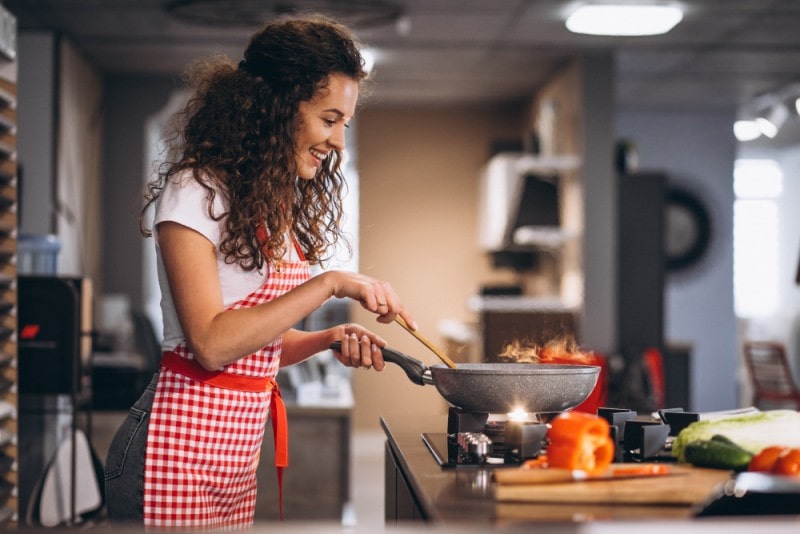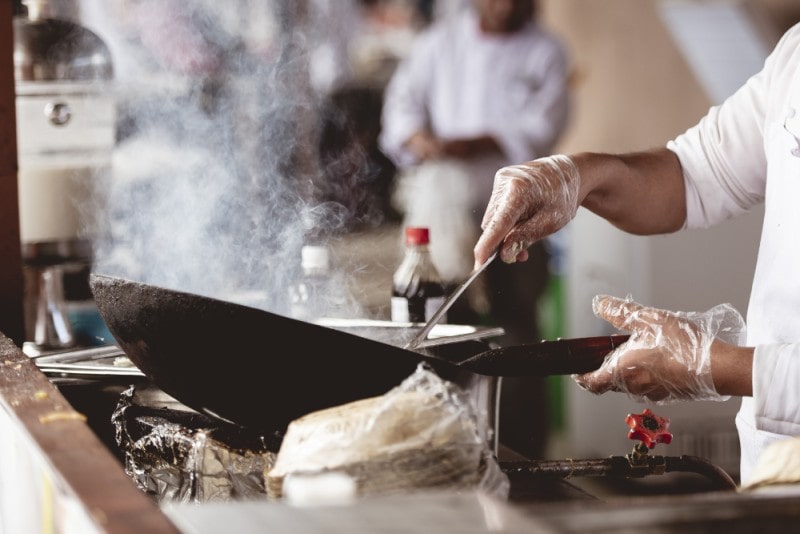Today, we use the cloud to run our businesses, save our images, and stream our movies. Most of the time, regardless of whether we’re aware of it, our meal orders are placed there.
Introducing cloud kitchens, a new type of commercial kitchen designed to create meals for delivery.
These commissary kitchens are also called virtual restaurants for the delivery-only food businesses that operate inside them, ghost kitchens, shared kitchens, or virtual kitchens.
You may be saying, “This is nothing new,” and in a sense, you are correct. For decades, Chinese restaurants have significantly benefited from delivery. And the pizza business has essentially been founded around delivery optimization.
But recent technological developments and alterations in consumer behavior have made switching to a delivery-only business model conceivable.
In comparison to a traditional brick-and-mortar restaurant, it has some advantages.
Table of Contents
How Are Cloud Kitchens Used?

Favorite neighborhood eateries, as well as well-known national brands, are swiftly choosing cloud kitchens as the best way to grow their businesses.
Here are a few different business categories that are using ghost kitchens as part of their expansion plans.
Delivery Optimized Restaurants
Restaurants that are optimized for delivery can fulfill orders without incurring additional costs or inconvenience.
To gather orders and streamline delivery operations, cloud kitchen-based restaurants use online meal delivery platforms (such as DoorDash, Postmates, and UberEats) or their own white-label platform.
Food is then delivered to customers’ homes or workplaces after they place an order via mobile devices.
Caterers
Do you run a catering business and require an affordable private kitchen with lots of cold and dry storage? Cloud kitchens are the perfect answer.
Meal Prep Businesses
Meal prep businesses frequently only require kitchen space for a few days per week. This freedom is available to you through virtual kitchens.
Makers of Packaged Foods
Cloud kitchens can offer sufficient equipment and warehouse space to let producers of packaged foods expand.
Food Product Testing
A cloud kitchen is a low-risk, low-investment solution that enables your business to market test fresh food goods and brand ideas.
Now let’s discuss how a cloud kitchen is different from a typical restaurant that offers delivery.
Cloud Kitchens vs. Traditional Kitchens

The conventional restaurant paradigm is updated with contemporary convenience and more significant cost reductions in cloud kitchens.
Here are a few significant distinctions between conventional eateries and cloud kitchens:
Traditional Eateries Demand More Investment and Administrative Work
A dining space, a host stand, a bar, a waiting area, and facilities for customers and employees are frequently needed in traditional restaurants. More room entails higher costs and more maintenance.
Cloud kitchens provide private commercial kitchen spaces, but all customers share the costs of shared amenities (such as restrooms and halls).
Don’t require as many spaces as a regular restaurant. Instead, the area might be used to create functional spaces for your kitchen employees.
Many of our selections at Revolving Kitchen are more prominent than in typical restaurant kitchens. A ghost kitchen can be rented anywhere from 250 to 680 square feet.
Kitchens in typical restaurants might be as little as 300 to 400 square feet. In a ghost kitchen, you can test various ideas, handle many orders, and enjoy a cozier working environment.
Traditional Kitchens Need More Staff
Traditional dining establishments need managers, hosts, servers, cooks, and bartenders. A ghost kitchen requires employees to prepare the meals and supervisors to oversee the establishment.
If you don’t offer order pickup, the rental facility will provide maintenance workers for you, and you won’t have any in-person clients for waitstaff to serve.
Cloud Kitchens Cost Less to Start
A traditional restaurant needs a lot of money to open, including money for payroll, cooking equipment, furniture, and utilities, in addition to paying exorbitant rent or taking out a heavy mortgage.
Flat-fee pricing for administrative elements, including janitorial costs, garbage collection, and cooking equipment, is a common aspect of cloud kitchens.
The Profit Margins for Cloud Kitchens Are Higher
The amount a business makes after deducting costs like rent, employee salaries, monthly utilities, and general maintenance is known as its profit margin.
Due to their higher administrative costs and startup expenditures, traditional restaurants often have lower profit margins than restaurants operating in cloud kitchens.

How does a Cloud Kitchen Operate?
The business strategy for cloud kitchens is focused only on deliveries. For off-site dining, these restaurants rely on orders placed through their websites or delivery services like UberEats, Grubhub, DoorDash, and Deliveroo.
By reducing the two main operating expenses—rent and labor—restaurants can diversify and increase the size of their customer base.
Businesses have the chance to reduce costs and increase orders because they simply need to hire kitchen employees and have low overhead.
Cloud kitchens don’t have to provide customers with a memorable dine-in experience because they just provide delivery.
High leasing expenses, significant construction expenditures, restaurant interiors, guest amenities, and front-of-house employees are not concerns.
Because digital channels are used to acquire customers, cloud kitchens make significant investments in technology supporting the entire business model.
Significant investments can also involve trained labor, chefs and delivery drivers, and a well-equipped kitchen infrastructure.
Some cloud restaurants rely on their delivery fleet to tailor their service, while others use aggregators.
Making the Best Technology Decisions for Your Cloud Kitchen
Since most orders are placed online through a website, app, or delivery aggregators, technology is essential to cloud kitchens.
A cloud kitchen needs an integrated technology infrastructure for efficient operation of the kitchen and the processing of payments.
A point of sale (POS) system that accepts orders from many channels, such as delivery aggregators and online ordering sites, is a crucial prerequisite for a cloud kitchen.
You can keep track of orders from each platform and see which platform is most effective for you if your restaurant POS system is integrated.
It’s essential to have access to sales data if you want to create tactics that will increase your sales.
While working with online food aggregators is vital, you should also think about adding your restaurant website or mobile app as an extra sales channel for taking orders.
If you want to deliver the order within 30 minutes, the average order preparation time in a busy cloud kitchen is 10 to 12 minutes. Order preparation time will be optimized using an integrated Kitchen Display System (KDS).
The KDS is updated as soon as the order is received. The order details and pickup time are immediately visible to the kitchen staff, who may prepare the food as necessary.
This optimizes efficiency, simplifies kitchen management, and makes it possible to see any delays and cut down on preparation time.
Wrap Up!
Any restaurant must effectively manage its inventory, and a cloud kitchen is no different.
You can monitor daily stock usage with the help of an intelligent inventory management system, which will also alert you when you need to order extra stock. As a result, you will be able to reduce food waste and regulate your food expenses.
Technology is essential to a cloud kitchen company’s efficient running and smooth operation.
A complete technology platform with seamless connectivity between POS, KDS, and inventory management will guarantee operational effectiveness and the smooth operation of your cloud kitchen business.
Problogshub.com is your favorite web spot to find the latest and trending web blogs in various topics. We do our best to serve you the accurate and fresh information through our blogs.




